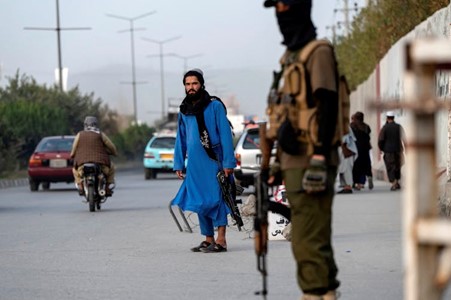The Taliban’s Education Overhaul in Afghanistan
After taking control of Afghanistan in 2021, the Taliban made major changes to the country’s education system. These changes have been especially hard for girls and women. Since then, girls have been banned from attending school after the sixth grade. The Taliban also expanded religious schools, or madrasas, and reintroduced corporal punishment in schools.
Now, the Taliban are changing the school curriculum for all students, both boys and girls, from grades 1-12. They have already updated the textbooks up to the eighth grade. The rest of the changes are expected to be completed soon.
Ideology in the Curriculum
These changes are not just about education—they are about pushing the Taliban’s ideology. The new curriculum echoes the past when regimes tried to control education to spread their own beliefs. It reminds us of the Soviet-backed government in the 1980s, which also used textbooks to spread its ideology. The Taliban are doing something similar. Their goal is to shape young minds to follow their strict, extremist beliefs, ensuring they stay in power for generations.
Changes in the Curriculum
Afghanistan’s education system is centralized, meaning all schools follow the same curriculum. After the fall of the Taliban in 2001, reforms were made to the curriculum to promote peace, equality, and growth. Over the next two decades, the curriculum was revised to remove violence, focus on personal development, and make education more inclusive.
But when the Taliban returned to power in 2021, they immediately criticized the past education system. They said it was “brainwashing” Afghan youth and weakening religious values. They wanted to replace it with a new education system based on their ideas.
Key Changes in School Subjects
The Taliban are changing what is taught in schools. According to their education commission, the following subjects have been removed or changed:
- Art and Culture: Subjects like art, civil education, and culture have been taken out. More time is being dedicated to religious studies.
- Human Rights: Topics about human rights, women’s rights, and democracy are no longer taught.
- Images of Living Things: All images of humans, animals, and nature have been removed. The Taliban believe that only God can create living beings, and it is forbidden to show them in pictures.
- Religious Teaching: More religious content has been added, promoting the Taliban’s beliefs and justifying violence against those who oppose them.
- Shaping Behavior: The curriculum is designed to shape students’ behaviors to match the Taliban’s vision for society. This includes teaching values that restrict women’s freedom, such as their dress code and public behavior.
- Emirate Studies: Schools are now required to teach students about the Taliban’s leaders and history. They portray the Taliban’s takeover as a victory over secular values.
Restricting Education Beyond Afghanistan
The Taliban are not only changing the curriculum inside the country. They have also banned women from studying abroad. On top of this, they have banned over 400 books on science, philosophy, and democracy. These books have been removed from libraries, bookstores, and publishing houses.
Increase in Corporal Punishment
A report from Human Rights Watch in 2023 highlighted an increase in corporal punishment in Afghan schools. Teachers are now using punishments like slapping, whipping, and humiliation to enforce the new rules. Even teachers who teach subjects like math and science must pass religious tests to keep their jobs.
A Return to the Past?
The Taliban’s new curriculum is similar to the one they used during their first rule from 1995 to 2001. Back then, the curriculum promoted violence and jihad. The alphabet even included letters like “J” for jihad and “M” for mujahideen, meaning Islamic fighters.
During that time, the Taliban banned art, music, and photography. They believed these things were against God’s will. Education became focused entirely on religion. This caused a decline in school attendance, and many teachers left their jobs. As a result, the education system collapsed.
What This Means for the Future
The changes the Taliban are making today could lead to the same problems as before. Schools might become centers for indoctrination instead of places for learning. Many parents may decide not to send their children to school, especially with the removal of the law that made education mandatory.
The Taliban’s new education policies are also causing concern internationally. Foreign aid has already been cut, as donors do not want to support education systems that promote discrimination and extremism. This is putting even more pressure on an already fragile education system in Afghanistan.
A Dangerous Future
The Taliban’s push to control education is not just about Afghanistan. The effects could spread beyond the country. The world could face more instability if these policies continue. The people of Afghanistan, especially the youth, will bear the brunt of these changes. But the global community will feel the impact as well.


